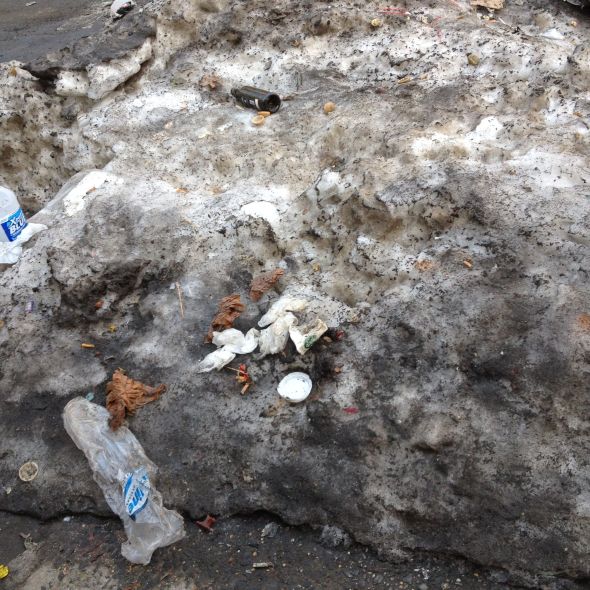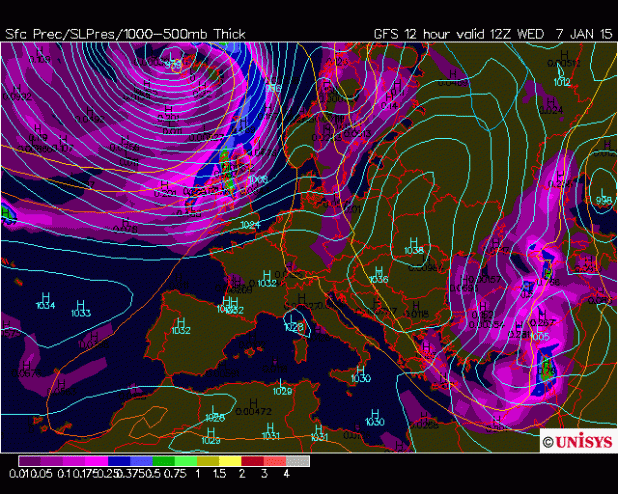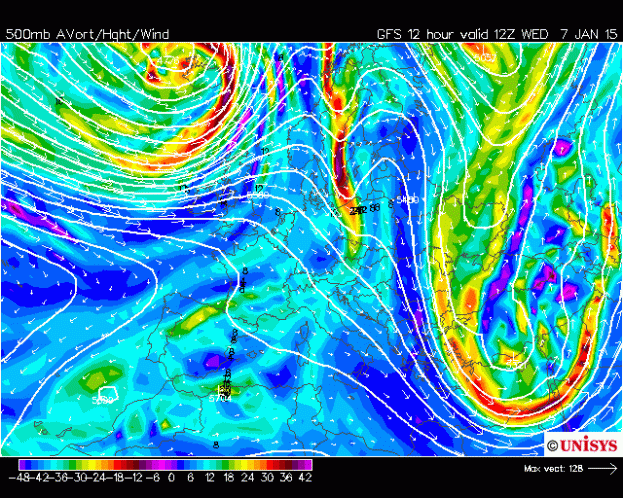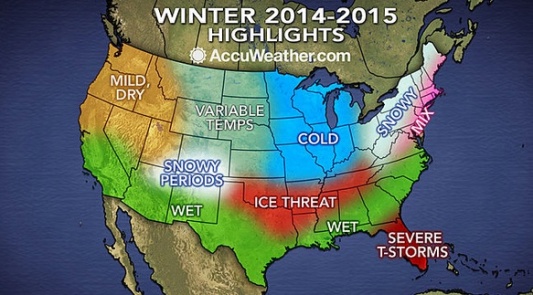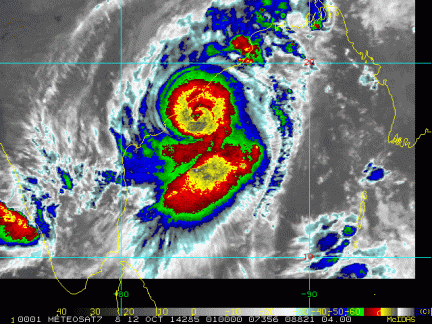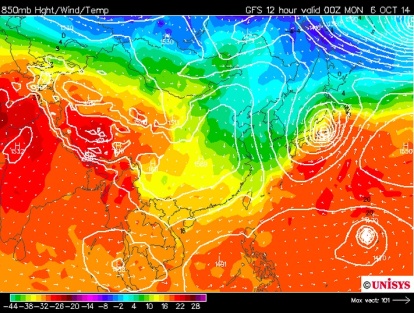Last night into this morning we had a little winter storm pass through. The precipitation forecast was tricky. Here in New York City we were, as we often are in winter, very close to the rain-snow line. In the end, we got maybe a couple inches of snow, plus some rain. Walking around today was messy business, with big sloppy puddles and lots of slush. Here’s a photo from my window down onto the street:
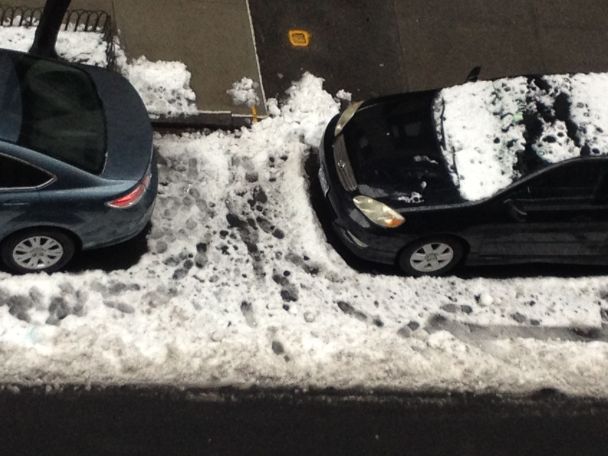
Many people don’t like this kind of weather. Many people would rather it were a little colder, so that we’d have nothing but clean white snow. (Of course in NYC it is only ever clean and white for a very short while, but never mind.) I get that. But actually, I like the slush.
Before saying anything else I have to admit that I don’t particularly like cold weather, period. I have mediocre circulation in my hands and feet. I get cold. I can enjoy some winter sports, but put me on the nicest ski slope around and then offer me the chance to be instantly transported somewhere warm and I’ll never say no. I grew up here and have lived here most of my life, but apparently I’m still not adjusted to the climate. I still find every winter a little harsh. And I know, a New York City winter is nothing compared to a lot of places.
Maybe that’s why I ended up working on tropical meteorology – thinking warm thoughts is part of my job. (And yes, occasionally I get to go to a conference or a field campaign in a tropical place when it’s winter here.)
So my appreciation for slush is partly about realizing that it could be even colder than it is. But it’s a little more than that. Slush tells us, in the most visceral way possible as it soaks through our shoes, how special a planet we live on. We can have slush only when the temperature is right near the freezing point of water, at which water can coexist in all three of its phases: solid, liquid, vapor.
A planet which has liquid water can support life. As scientists try to figure out if there’s life on Mars, looking for evidence of liquid water there seems to be most of the ballgame. And it’s only in a pretty narrow temperature range – compared to the range of possible planetary climates – that liquid water can exist; too cold and it all freezes (Mars, at least now), too warm and it all evaporates (Venus).
While we may need liquid water to support life, we don’t need ice. But the ice helps us appreciate the liquid. It shows us just how close we are to the edge. When it’s slushy, we can feel the transition between a frozen climate that is fundamentally inhospitable to life (sorry, Canadians, Midwesterners, Russians etc.) and one that isn’t. When I’ve been on a winter car trip to somewhere really cold and snowy, and I’m returning back to somewhere warmer, I always feel something magical at that slushy boundary in between.
On some days, we live right on that boundary. This was one of those days, in a particularly complete and interesting way. Let’s look at some data.
The picture below shows the local sounding — set of upper air measurements taken by weather balloon, plotted vs. height — from our National Weather Service station in Upton, New York (Long Island) from 7 AM local time this morning.
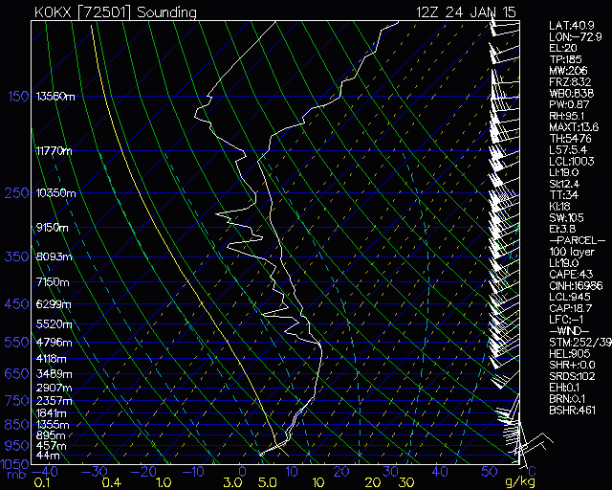
This is a “skew-T log-p diagram”. If you don’t know how to read one of these, I’m going to teach you what you need to know for today. It shows all the variables (temperature, humidity, wind) the balloon measured as functions of height, which is on the vertical axis just as you think it would be (see the white numbers just to the right of the vertical axis on the left, which give the height in meters; the blue letters to the left give the pressure, in hectoPascals). The higher you are on the plot, the higher the balloon was.
The two white lines are the temperature and dew point temperature. If they are on top of each other — as they are below about 5000 m (~3 miles up) — that means the atmosphere is saturated, relative humidity = 100%. Not a big surprise, as precipitation was falling when this balloon was flying.
More interesting is the temperature itself. The reason this is called a “skew-T” plot is that the axes are not at right angles — temperature is not on the horizontal axis, but rather on a tilted axis. The blue lines angling up to the right are lines of constant temperature, or isotherms. You can tell the temperature (in Celsius) of each one by the blue number where it hits the bottom. So a vertical line, for example, would mean the balloon is getting colder as it goes up, as it would be crossing blue lines with lower temperatures. In most soundings, from nearly everywhere on earth, the atmosphere does get colder with altitude, with only a few exceptions. (The word “inversion” is used to describe a layer where temperature increases with height; the word itself tells you right away that it’s an exception to a rule.)
Our balloon’s temperature trace, though, tracks right along one of the blue lines in a layer between about 1000 and 2500 m (or between 900 and 750 hPa, if you like). That means that in that layer, temperature was not decreasing with altitude, but staying the same – it was an isothermal layer. And not at any old temperature – the blue line is the one with a zero below it where it hits the bottom of the plot. That means that a roughly mile-thick slab of atmosphere was almost exactly at freezing.
Why would that happen? Most likely the layer started out somewhere in the vicinity of zero C, but with more variation — part of the layer was colder, part warmer. Then precipitation (ice, liquid, or more likely some combination) started falling through it, and freezing and melting. Freezing liquid warms the air by the latent heat of fusion, while melting ice cools it for the same reason. So layers colder than zero would be warmed by freezing rain, while warmer layers would be cooled by melting snow or sleet. This would bring the temperature everywhere towards zero.
Just above the surface, the sounding shows an inversion layer, where temperature increases with height, so any frozen precip had a little more chance to melt before hitting the surface – which was, itself, exactly at zero C, about to become the perfect environment for slush as sunrise warmed it a bit above that temperature.
In other words, not just the ground, but the atmosphere itself was slushy. Organically, perfectly so.
And tonight, the temperature will drop, and we’ll have black ice. I don’t think I’ll be able to write such a happy meditation on that.


